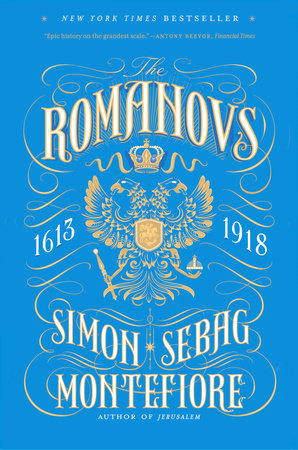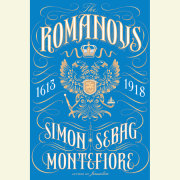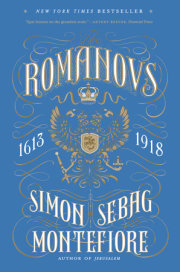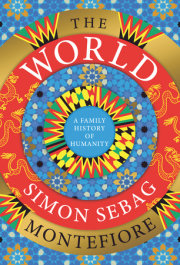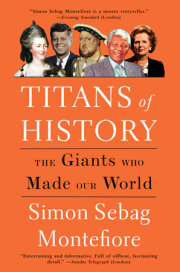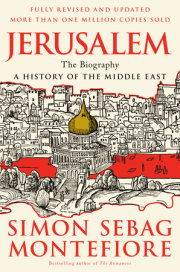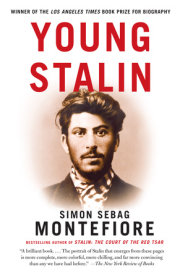ACT I
THE RISE
SCENE 1
The Brideshows
CAST
THE LAST OF THE RURIKID TSARS
IVAN THE TERRIBLE 1547–84
Anastasia Romanovna Zakharina-Yurieva, his first tsarina
Ivan Ivanovich, their eldest son and heir, murdered by his father
FYODOR I, their second son, tsar 1584–98
Dmitri Ivanovich, Ivan the Terrible’s last son, mysteriously killed. Identity assumed by three impostors, the False Dmitris
THE TIME OF TROUBLES: tsars and pretenders
BORIS GODUNOV, tsar 1598–1605
THE FALSE DMITRI, tsar 1605–6
VASILY SHUISKY, tsar 1606–10
Second False Dmitri, known as the “Brigand of Tushino”
Ivan Dmitrievich, the “Baby Brigand”
Marina Mniszech, daughter of a Polish nobleman, wife of the First False Dmitri, Second False Dmitri and Ivan Zarutsky, mother of the Baby Brigand, known as “Marinka the Witch”
Warlords
Prince Dmitri Pozharsky, hero of the resistance
Kuzma Minin, merchant of Nizhny Novgorod, leader of the resistance
Prince Dmitri Trubetskoi, aristocrat and leader of Cossacks
Foreign invaders
King Sigismund III of Poland
Prince Władysław of Poland, later king
Gustavus Adolphus, king of Sweden
THE FIRST OF THE ROMANOVS
Nikita Romanovich Zakharin-Yuriev, brother of Anastasia, first wife of Ivan the Terrible
His son Fyodor Nikitich Romanov, later the priest Filaret
Ksenia Shestova, later the Nun Martha, Fyodor’s wife
Their son, MICHAEL, the first Romanov tsar, 1613–45
Ivan Romanov, Fyodor’s brother, Michael’s uncle, boyar
Anna Khlopova, Michael’s first fiancée
Maria Dolgorukaya, his first wife
Eudoxia Streshneva, his second wife
Irina, tsarevna, daughter of Michael and Eudoxia
ALEXEI, son and heir of Michael and Eudoxia, tsar 1645–76
COURTIERS: ministers etc.
Fyodor Sheremetev, Romanov cousin, boyar and chief minister
Mikhail Saltykov, Romanov cousin, royal cupbearer and armsbearer
Prince Ivan Cherkassky, Romanov cousin of Circassian descent, boyar
Prince Dmitri Cherkassky, Romanov cousin of Circassian descent, boyar
Prince Dmitri Pozharsky, patriotic warlord, later boyar and chief commander
Prince Dmitri Trubetskoi, aristocrat and Cossack warlord, candidate for tsar
Michael was in no rush to proceed to Moscow, but Moscow was desperate for him to arrive. In the civil war, the contestants for supremacy—aristocratic magnates, foreign kings, Cossack chieftains, impostors and adventurers—had fought their way towards Moscow, hungry to seize the crown. But Michael Romanov and the Nun Martha were unenthusiastic. There has never been a more miserable, whining and melancholic procession to a throne. But the plight of Russia early in 1613 was dire, its trauma dystopian. The territory between Kostroma and Moscow was dangerous; Michael would pass through villages where dead bodies lay strewn in the streets. Russia was far smaller than the Russian Federation today; its border with Sweden in the north was close to Novgorod, that with Poland–Lithuania close to Smolensk, much of Siberia in the east was unconquered, and most of the south was still the territory of the khanate of the Tatars. But it was still a vast territory with around 14 million people, compared to about 4 million in England at the time. Yet Russia had almost disintegrated; famine and war had culled its population; the Poles were still hunting the boy-tsar; Swedish and Polish–Lithuanian armies were massing to advance into Russia; Cossack warlords ruled swathes of the south, harbouring pretenders to the throne; there was no money, the crown jewels had been looted; the Kremlin palaces were ruined.
The transformation of Michael’s life must have been convulsive: the court of a tsar had to be reconstructed, courtier by courtier, silver spoon by silver spoon, diamond by diamond. He and his mother were undoubtedly terrified of what awaited them in the capital and they had every reason to be anxious. Yet now this teenager of an untitled noble family, whose father was lost in a foreign prison, found greatness thrust upon him, a greatness that he owed, above all, to the family’s first patron, Ivan the Terrible.
Thirty years after his death, Ivan still cast his dread shadow over Russia and the boy Michael. Ivan had expanded the Russian empire—and almost destroyed it from within. He had first boosted its splendour and then poisoned it—a fifty-year reign of triumph and madness. But his first and favourite wife, the mother of his first brood of sons, was a Romanov—and the founder of the family’s fortunes.
Ivan himself was the scion of a royal family descended from Rurik, a semi-mythical Scandinavian prince who, in 862, was invited by Slavs and other local tribes to rule them, becoming the founder of the first Russian dynasty. In 988, Rurik’s descendant Vladimir, grand prince of Rus, converted to Orthodoxy in Crimea under the authority of the Byzantine emperor and patriarch. His loose confederation of principalities, known as Kievan Rus, bound together by the Rurik dynasty, would ultimately extend almost from the Baltic to the Black Sea. But between 1238 and 1240 it was shattered by the Mongol armies of Genghis Khan and his family who, during their two centuries of Russian dominion, allowed Rurikid princes to rule small principalities as vassals. The Mongols’ view of a single universal emperor under God and their brutally arbitrary judicial decisions may have contributed to the Russian idea of autocracy. There was much mingling and marriage with the Mongols; many famous Russian families were descended from them. Gradually the Russian princes started to challenge Mongol authority: Ivan III the Great, grand prince of Moscow, had collected many of the Russian cities, particularly the republic of Great Novgorod in the north and Rostov in the south, under the Muscovite crown and in 1480 he decisively confronted the Mongol khans. After the fall of Byzantium to the Islamic Ottomans, he claimed the mantle of leadership of Orthodoxy. Ivan married the last Byzantine emperor’s niece, Sophia Paleologue, which allowed him to present himself as heir to the emperors. Ivan the Great started to style himself “Caesar,” which was russianized into “Tsar,” his new imperial status allowing his monkish propagandists to assert that he was regathering the territories of Rus. His son Vasily III continued his work, but Vasily’s son predeceased him so it was his grandson Ivan IV, Ivan the Terrible as he became, who succeeded to the throne as a toddler. His mother may have been poisoned and the child was traumatized when the rivalries of courtiers erupted into violence, growing up to be as magnetic, dynamic and imaginative as he was volatile and unpredictable.
At his coronation in 1547, when he was sixteen, Ivan was the first grand prince to be crowned tsar. The young autocrat had already launched his ritual search for a wife. In a tradition that derived from both of the precursors of tsardom—Mongol khans and the Byzantine emperors—he called a brideshow. Every choice of royal bride raised new clans to power and destroyed others. The brideshow was designed to diminish such turbulence by virtue of the tsar’s deliberate choice of a girl from the middle gentry. Five hundred virgins were summoned from throughout his realm for this Renaissance beauty-contest, which was won by a girl named Anastasia Romanovna Zakharina-Yurieva, the great-aunt of the boy Michael.
The daughter of the minor branch of a clan that was already at court, Anastasia was ideal, thanks to her combining a safe distance from influential potentates with a comforting familiarity. Ivan knew her already since her uncle had been one of his guardians. She was descended from Andrei Kobyla, whom the grand prince had promoted to the rank of boyar in 1346–7, but her branch of the family stemmed from his fourth son, the boyar Fyodor, who was called Koshka—“the Cat.” Each generation was known by the name of the male in the generation before, so the Cat’s children were dubbed the Koshkins, an appropriate designation given the Romanov family’s feline gifts for survival. Anastasia’s great-grandfather, Zakhar, and her grandfather, Yuri, were boyars, but her father Roman died young. However, he gave his name to the Romanovichi, who would become known as the Romanovs.
Soon after the coronation, on 2 February 1547, Ivan married Anastasia. The marriage was a success. She gave him six children of whom two male heirs survived, Ivan and Fyodor, and she had the gift of being able to calm his manic temperament. Yet he still exhausted her with his unpredictable frenzies and constant travels. At first his reign prospered: he marched south-eastwards on a Christian Orthodox crusade to defeat the Islamic Tatars, the descendants of Genghis Khan who were now divided into smaller khanates. First he conquered the khanates of Kazan and Astrakhan—triumphs he celebrated by building St. Basil’s Cathedral on Red Square; he despatched merchant adventurers and Cossack buccaneers to begin the conquest of vast, rich Siberia; he brought in European experts and merchants to modernize Muscovy and fought the Commonwealth of Poland–Lithuania to control the rich cities of the Baltic. But it was to be a long war which undermined the sanity of the tsar and the loyalty of his overmighty grandees, many of whom had their own links to the Poles. At the same time, he was often at war with the other regional power, the khanate of the Crimean Tatars to the south.
In 1553, Ivan fell ill. His wife’s brother Nikita Romanovich tried to persuade the courtiers to swear allegiance to the tsar’s baby son—but they refused, because they favoured his adult cousin, Prince Vladimir of Staritsa. The tsar recovered but emerged fixated on the treachery of his nobles and the independent allegiances of Prince Vladimir and the other magnates. In 1560, Anastasia died at the age of twenty-nine. Ivan was distraught, convinced she had been poisoned by hostile grandees. She may indeed have been poisoned, but she may just as easily have died of a disease or well-intentioned medicine. Either way, the defections and intrigues of his own magnates now sent Ivan into a spiral of violence: he suddenly withdrew from Moscow to a provincial stronghold whence he divided the realm between his private fief, the Separateness—Oprichnina—and the rest of the country. He unleashed a fearsome corps of black-clad upstart henchmen, the oprichniki, who astride black horses decorated with brooms and dog’s heads, to symbolize incorruptibility and ferocious loyalty, launched a reign of terror. As Ivan lurched between spasms of killing, praying and fornication, no one was safe. His instability was exacerbated by the fragility of his dynasty: only his son Ivan seemed likely to survive to adulthood since the youngest Fyodor was not strong. It was essential to marry again—which became an obsession like that of his contemporary Henry VIII. While he sought foreign brides, a princess from the dynasty ruling Sweden and Poland in the hope of winning the Polish throne, and an Englishwoman, possibly even Elizabeth I herself, Ivan worked his way through as many as eight wives, three of whom may have been poisoned, and some of whom may have been murdered on his own orders. When his second wife, a Tatar princess, died in 1569, another suspected victim of poisoning, he went berserk, purging his own ministers, cutting off noses and genitals, then descending with a posse of dog-headed oprichniki on to the cities of Tver and Novgorod, killing virtually their entire populations, treating victims with boiling then frozen water, hanging them from hooks inserted through their ribs, roping women and children together and pushing them under the ice. Taking advantage of Ivan’s demented distractions, the Tatar khan captured and burned Moscow.
After the oprichniki had done his bidding, Ivan reunited the tsardom but then abdicated and appointed a Tatar khan’s son, converted to Christianity, as grand prince of Russia before taking back the throne. There was some method in the madness: Ivan’s cruelties broke the power of the territorial magnates—even though they were garnished with the personal sadism of his diabolical idiosyncrasy. Anastasia’s brother Nikita Romanovich remained the uncle of the heirs to the throne, but the Romanovs were no safer than anyone else from the tsar. In 1575, at least one Romanov was killed and Nikita’s lands ravaged.
At a brideshow in September 1580, Ivan chose a new wife, Maria Nagaya, who gave him the son, Dmitri, that he craved. Yet, in 1581, in a rage he killed his own eldest son by Anastasia, Ivan, driving his iron-tipped staff into the boy’s head, the awful climax of his reign. He had already debased Russia, but now he condemned it to chaos for the heirs to the throne were his other son by Anastasia, the weak and simple-minded Fyodor—and the baby Dmitri.
On Ivan the Terrible’s death in 1584, Nikita Romanovich helped ensure the succession of his nephew Fyodor I. But Nikita died soon afterwards and his influence was inherited by his son Fyodor Nikitich Romanov, future father of Michael.
Tsar Fyodor left the ruling to his able minister Boris Godunov, who had risen as one of Ivan’s oprichniki and now consolidated his power by marrying his sister to the tsar. The last Rurikid heir was Ivan’s youngest son, the eight-year-old Dmitri, who now vanished from the scene. He officially died from a knife wound to the throat, self-inflicted during an epileptic fit. This would have been such a freak accident it may actually have happened, but inevitably many believed he had either been assassinated by Godunov—or been spirited away to safety.
When Tsar Fyodor died childless in 1598, the Muscovite line of the Rurikid dynasty was extinct.
There were two candidates for the throne—Fyodor’s minister and brother-in-law Boris Godunov, and Fyodor Romanov, eldest nephew of the late Tsarina Anastasia, and son of Nikita Romanovich, who was known as the best-dressed boyar at court. Fyodor Romanov married Ksenia Shestova, but of their six children, including four sons, only one daughter and one son survived: the future Tsar Michael was born in 1596 and was probably raised in a mansion near Red Square on Varvarka Street. He was showered with gifts but his childhood was not stable for long.
Godunov was elected tsar by an Assembly of the Land, so he was the nearest thing to a legitimate ruler after the extinction of the rightful dynasty, and he was initially backed by Fyodor Romanov. Godunov was gifted, but luck is essential in politics and he was unlucky. His enduring achievement took place on his eastern borders, where his Cossack adventurers managed to conquer the khanate of Sibr, opening up the vastness of Siberia. But Russia herself suffered famine and disease, while Boris’s own illness undermined his tenuous authority.
Fyodor Romanov, whose intrigues and escapes displayed all the agility of his cat-like ancestors, helped spread the fatal rumours that Ivan the Terrible’s late son Dmitri had escaped and was still alive. A showdown was nearing, and the Romanovs brought military retainers into Moscow. When Michael Romanov was only five, his world was destroyed.
In 1600, Godunov pounced on Fyodor and his four brothers, who were accused of treason and sorcery; their servants testified under torture to their practice of witchcraft and stashes of “poisonous herbs.” Tsar Boris burned down one of their palaces, confiscated their estates and exiled them to the Arctic. To ensure that Fyodor Romanov could never be tsar, he was forced to take holy orders, under a new priestly name Filaret, while his wife became the Nun Martha. Michael was sent to live with his aunt, the wife of his uncle Alexander Romanov, in the remote village of Belozersk. He remained there for fifteen frightening months before he and his aunt were allowed to move to a Romanov estate fifty miles from Moscow. Three of the five Romanov brothers were liquidated or died mysteriously. “Tsar Boris got rid of us all,” Filaret remembered later. “He had me tonsured, killed three of my brothers, ordering them strangled. I now only had one brother Ivan left.” Godunov could not kill all of the Romanovs, with their special connections to the Rurikid tsars, not after the murky demise of Tsarevich Dmitri. The vanishing of royal children at the hands of power-hungry relatives has a fitting way of destroying the very power they seek.
Copyright © 2016 by Simon Sebag Montefiore. All rights reserved. No part of this excerpt may be reproduced or reprinted without permission in writing from the publisher.

